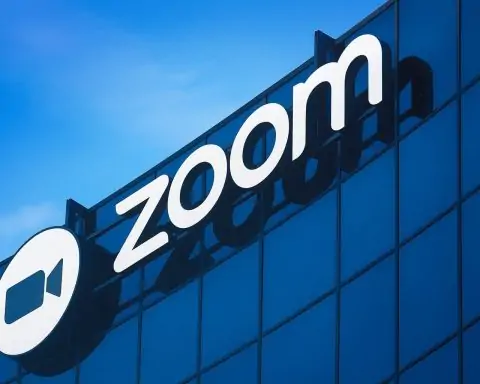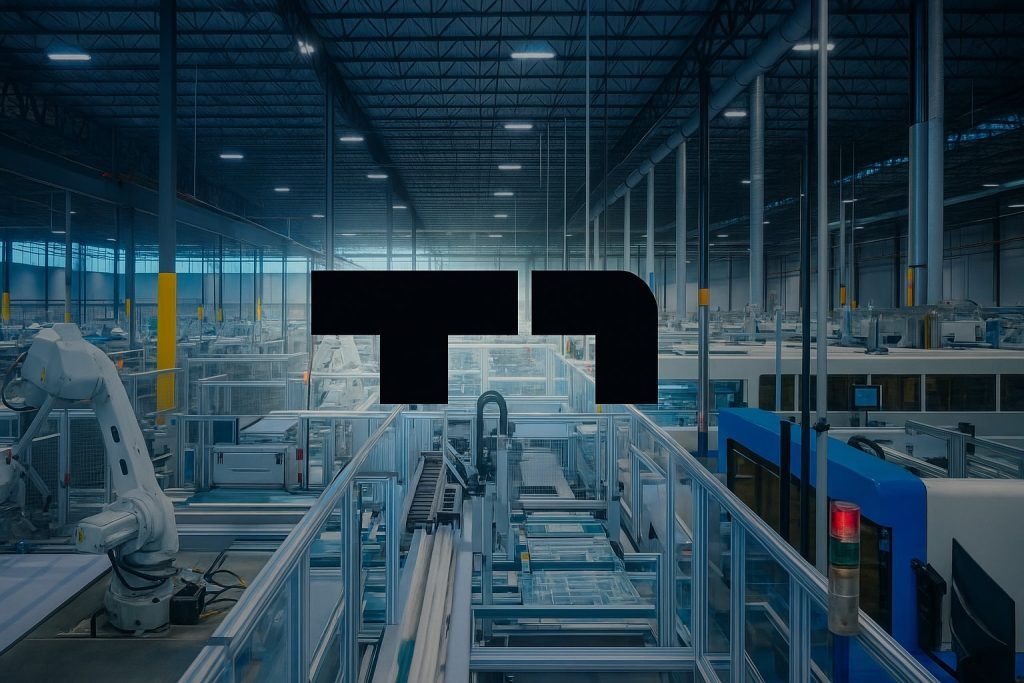- Stock Surge: Omeros (NASDAQ: OMER) shares jumped ~146% on Oct 15, 2025, closing around $10.11 after opening near $11.53 [1]. This leap followed news of a major Novo Nordisk licensing deal.
- Novo Nordisk Deal: Novo Nordisk will acquire exclusive global rights to Omeros’s investigational drug zaltenibart (OMS906) – a MASP-3 inhibitor for rare blood and kidney disorders – under a definitive agreement valued at up to $2.1 billion [2] [3]. Omeros will receive $340 million upfront and near-term milestones, plus additional development and sales milestones (up to $2.1B) and tiered royalties [4] [5]. The deal is expected to close in Q4 2025 [6] [7].
- Pipeline Focus: With zaltenibart licensed out, Omeros will pivot to its lead asset narsoplimab (OMS721), an antibody for transplant-associated thrombotic microangiopathy (TA-TMA) currently under FDA and EMA review [8] [9]. Omeros reported its resubmitted U.S. BLA was accepted (PDUFA date extended to Dec 26, 2025) [10]. An EMA application for narsoplimab was validated and is pending review (opinion expected mid-2026) [11].
- Analyst Sentiment: Traders are upbeat. D. Boral Capital reiterated a “Buy” rating with a $36 target (≈250% upside) [12]. Broker consensus is roughly a “moderate buy”, with an average one-year target around $18 (range $9–$36) [13] [14]. Some aggregators even project OMER could reach ~$30+ in 2026 if milestones are met [15] [16].
- Future Catalysts & Risks: After closing, Novo plans a global Phase 3 program in paroxysmal nocturnal hemoglobinuria (PNH) and other complement-mediated disorders [17] [18]. Meanwhile, Omeros is eyeing FDA approval of narsoplimab by year-end (FDA indicated labeling discussions by Oct 2025 [19]). Upside hinges on successful trials and approvals, while risks include costly R&D, regulatory setbacks and Omeros’s historically tight cash position. Prior to this deal Omeros had streamlined debt and raised fresh equity [20], but sustained losses and high volatility remain key concerns [21] [22].
Novo Nordisk Licensing Deal Sparks Rally
On Oct. 15, Novo Nordisk (NYSE: NVO) and Omeros announced a landmark deal licensing zaltenibart (OMS906), Omeros’s experimental MASP-3 inhibitor for rare blood/kidney diseases [23]. Under the agreement, Novo pays $340M upfront and can pay up to $2.1 billion in total milestones and royalties for exclusive global rights [24] [25]. Reuters reports that Omeros stock “more than doubled to $9.90” in early trading after the news [26], and by market close had settled near $10.10 [27]. TechStock² (ts2.tech) notes Omeros shares surged roughly 65% on the announcement [28]. The deal is structured as an asset purchase and license – not an outright acquisition – and is expected to close in Q4 2025, after which Novo will launch a global Phase 3 trial in PNH and possibly other complement disorders [29] [30].
Novonordisk’s CSO Martin Lange praised zaltenibart’s “novel mode of action” and potential advantages over existing complement therapies [31]. Omeros CEO Gregory Demopulos welcomed the partnership, saying he was “pleased to enter into this agreement with Novo Nordisk” and expects Novo’s global reach to “unlock the potential” of zaltenibart [32]. According to ts2.tech, Omeros executives believe the deal “validates their research and funds further trials” [33]. In effect, the transaction injects cash into Omeros (enough to pay off prior debt and fund operations) and confirms interest in its drug pipeline.
Omeros Pipeline and Recent Developments
With zaltenibart handed off to Novo, Omeros turns back to narsoplimab (OMS721), a MASP-2 targeting monoclonal antibody for TA-TMA (a deadly transplant complication). Omeros recently resubmitted its U.S. Biologics License Application, and FDA set a new PDUFA target date of Dec. 26, 2025 [34]. The FDA indicated that, barring major issues, label discussions could start by Oct 2025 [35]. In Europe, Omeros filed for EMA approval of narsoplimab in June 2025; the submission was validated and a CHMP opinion is expected by mid-2026 [36]. These potential approvals (and future U.S. launch) remain major catalysts.
Omeros’s recent filings show the company is streamlining its balance sheet. In Q2 2025, Omeros trimmed over $100M of near-term debt via note exchanges and a direct stock sale [37] [38]. The CEO highlighted that a long-term investor (Polar Asset) injected capital, and that Omeros is “preparing for the anticipated approval” of narsoplimab [39]. The company also noted continued NIH backing: the National Institute on Drug Abuse is funding Omeros’s OMS527 program (a PDE7 inhibitor for cocaine addiction) [40]. Other pipeline projects (e.g. an AML candidate) are in early stages.
Importantly, Omeros retains rights to non-zaltenibart MASP-3 programs and is free to develop other MASP-3 inhibitors [41]. In summary, aside from the Novo deal, recent Omeros news includes promising trial data (phase 2 PNH results for zaltenibart) and ongoing regulatory filings.
Stock Performance and Analyst Views
The market’s reaction was dramatic. On Oct 15 the stock opened above $11 (from ~$4 prior close), spiked to a high of $12.07 and settled around $10.11 [42] – a one-day gain of about 146%. Average volume was massively higher (~54 million shares on Oct 15 vs. ~1M typical) [43]. OMER’s 52-week range was just $2.95–$13.60 prior to the deal, reflecting the microcap’s volatility [44].
Analysts who have followed Omeros are now updating their outlooks. D. Boral Capital (via analyst Jason Kolbert) reaffirmed a Buy rating on Oct 15 with a $36 price target (implying ~250% upside) [45]. Needham had a neutral view, but consensus among 3 covering analysts is “Strong Buy” with an average target around $18 (range $9–$36) [46]. Financial data aggregators show similar forecasts: one-year price targets average $30.60 [47], reflecting excitement about the deal and pipeline. In Ts2.tech’s summary, TipRanks data (pre-deal) showed an average target of just $5.40 [48], underscoring how quickly sentiment shifted on the news.
Sentiment is mixed: bulls point to the cash inflow, pipeline validation and potential blockbusters, while bears cite Omeros’s small revenue base, past trial setbacks and high burn rate. Omeros’s latest financials show no revenue growth and an EPS around –$2.11, operating deep losses [49]. Indeed, Omeros has historically been cash-starved, relying on asset deals. Traders should note the stock’s high beta (~3.2 [50]) and biotech risks (FDA outcomes are uncertain).
Future Outlook, Risks and Opportunities
Looking ahead, Omeros’s near-term catalysts include the expected FDA decision on narsoplimab (now late Dec 2025) [51] and the EMA review. A successful FDA approval would bring the first-ever TA-TMA treatment to market, which analysts say has high unmet need [52]. The Novo deal itself creates future opportunities: if zaltenibart proceeds to Phase 3 under Novo, Omeros could earn large milestones and royalties down the road, with little additional investment.
However, significant risks remain. Even with the Novo cash, Omeros is still a development-stage biotech with heavy R&D costs. Its long-term viability depends on executing multiple projects (narsoplimab, addiction programs, etc.) and potentially cutting deals for other assets. Failure of the BLA or EMA filings would be a severe setback. Additionally, if trial delays or regulatory issues arise, OMER could retreat sharply from these highs.
On balance, the Novo Nordisk deal has fundamentally changed Omeros’s outlook by derisking zaltenibart and providing a cash buffer. As one market observer noted, the transaction “validates” Omeros’s science and frees it to push forward on its other drugs [53]. Investors who believe in the pipeline see a big opportunity: current price targets well above the pre-deal trading range indicate that many now expect OMER to hit double-digit or even multi-hundred-percent gains if progress continues [54] [55]. Others will watch closely for the FDA’s call on narsoplimab and additional financing needs.
Sources: Official Omeros press releases [56] [57], Reuters [58] [59], market analytics (TechStock²) [60] [61], and financial news outlets (MarketBeat, stock analysis) [62] [63] [64]. These reports provide the data and expert commentary on Omeros’s recent developments and outlook.
References
1. www.investing.com, 2. investor.omeros.com, 3. www.reuters.com, 4. investor.omeros.com, 5. www.reuters.com, 6. ts2.tech, 7. www.reuters.com, 8. investor.omeros.com, 9. ts2.tech, 10. investor.omeros.com, 11. investor.omeros.com, 12. www.marketbeat.com, 13. stockanalysis.com, 14. fintel.io, 15. fintel.io, 16. stockanalysis.com, 17. ts2.tech, 18. www.reuters.com, 19. investor.omeros.com, 20. investor.omeros.com, 21. investor.omeros.com, 22. www.marketbeat.com, 23. investor.omeros.com, 24. investor.omeros.com, 25. www.reuters.com, 26. www.reuters.com, 27. www.investing.com, 28. ts2.tech, 29. ts2.tech, 30. www.reuters.com, 31. investor.omeros.com, 32. investor.omeros.com, 33. ts2.tech, 34. investor.omeros.com, 35. investor.omeros.com, 36. investor.omeros.com, 37. investor.omeros.com, 38. investor.omeros.com, 39. investor.omeros.com, 40. investor.omeros.com, 41. www.reuters.com, 42. www.investing.com, 43. www.investing.com, 44. www.marketbeat.com, 45. www.marketbeat.com, 46. stockanalysis.com, 47. fintel.io, 48. ts2.tech, 49. www.gurufocus.com, 50. www.gurufocus.com, 51. investor.omeros.com, 52. investor.omeros.com, 53. ts2.tech, 54. www.marketbeat.com, 55. fintel.io, 56. investor.omeros.com, 57. investor.omeros.com, 58. www.reuters.com, 59. www.reuters.com, 60. ts2.tech, 61. ts2.tech, 62. www.marketbeat.com, 63. stockanalysis.com, 64. fintel.io







